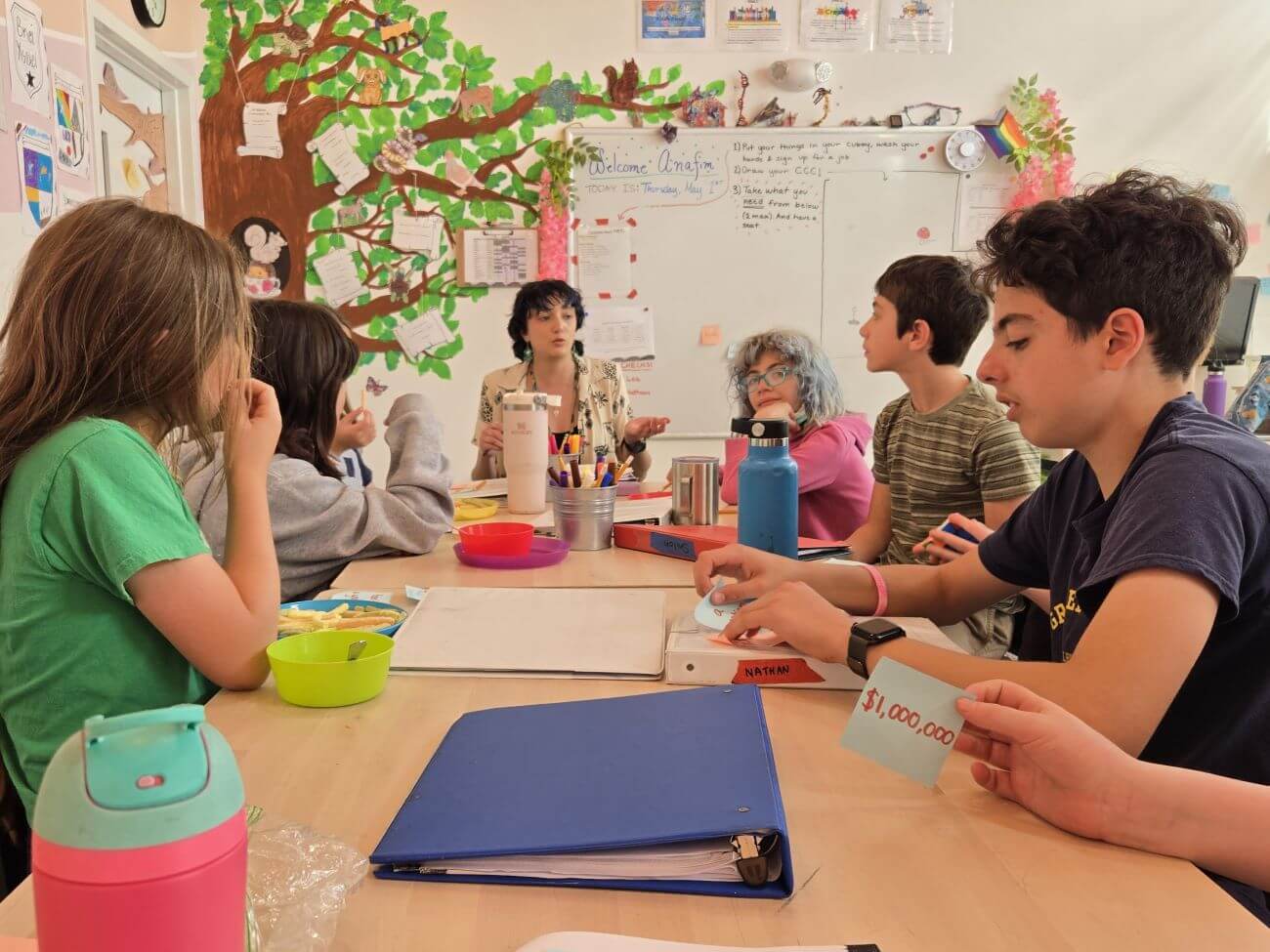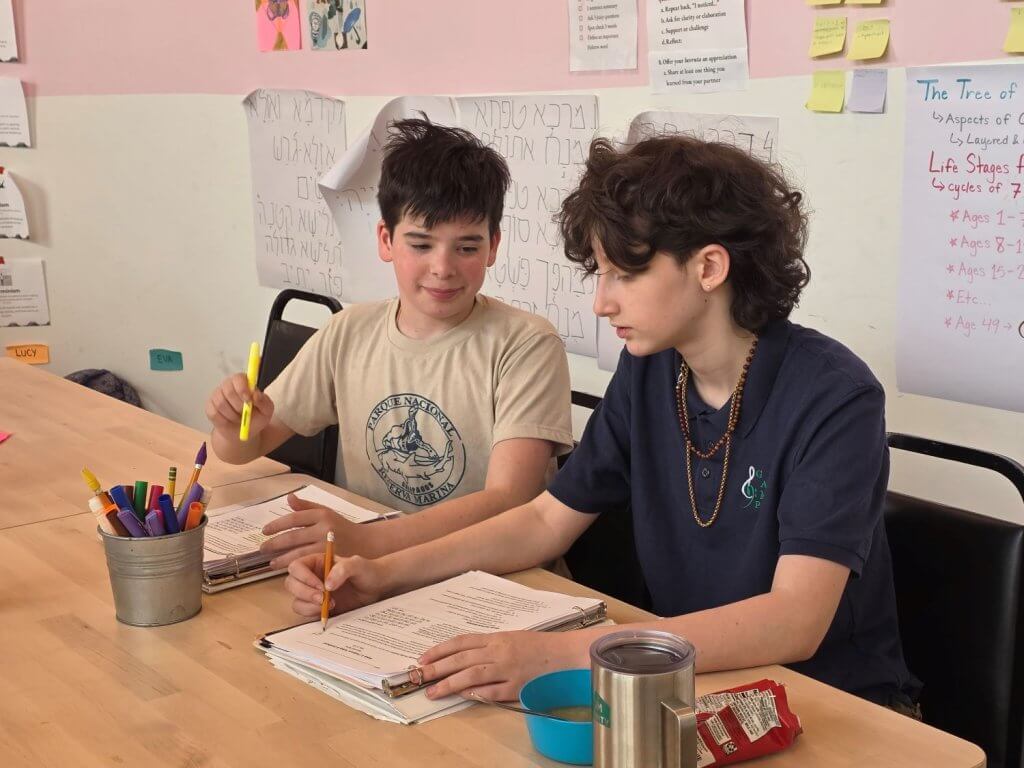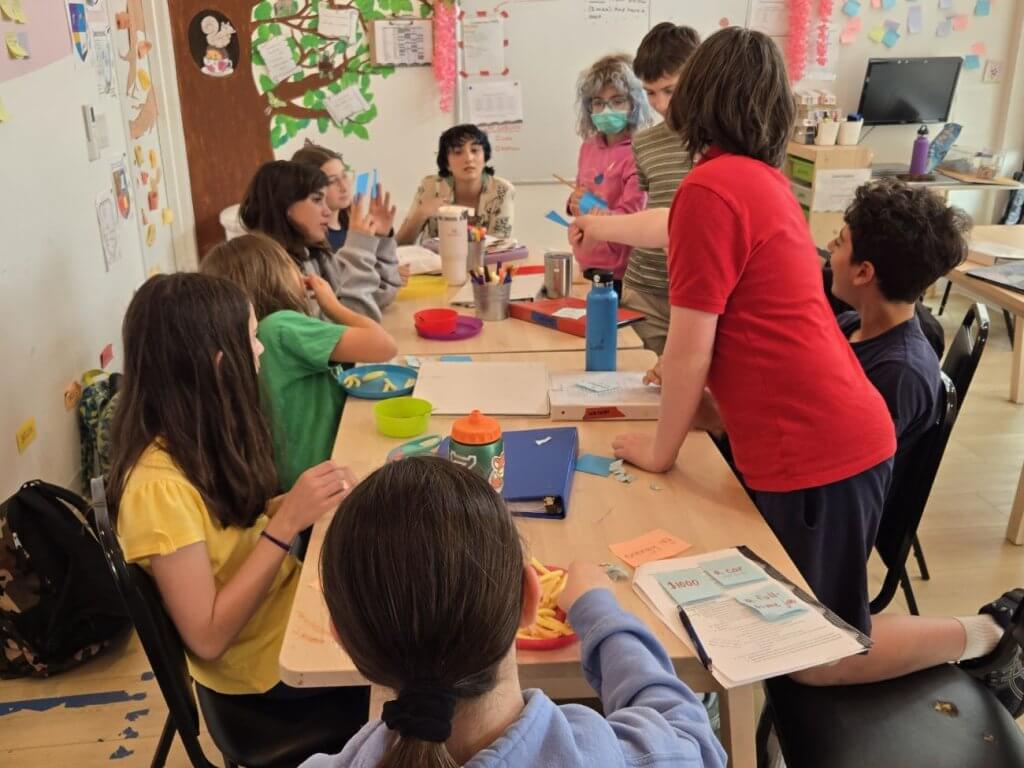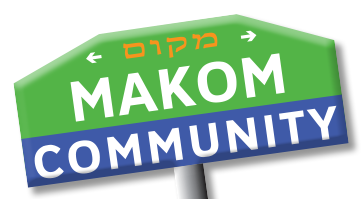
Our last Anafim (5-7 grade) unit of the year has us studying the shmittah and yovel years in the context of balancing rest and productivity. In my opinion, finding and maintaining this balance is essential for everyone—kids and adults alike. In fact, the Anafim learners may be encountering this need for balance for the first time now they are at an age that it affords them with the self-awareness required to recognize it.
In preparation for text study we encountered a commentary from Ramban in which he describes an ancient food distribution system designed to meet needs of the community during these special years, providing them with food proportionate to their needs. This got me wondering about the evolution of programs like this, their origins and how they compare to those in place today. I wanted the learners to consider what it’s like to rely on community-based programs. To achieve this, I set out to create an exercise that simulated the experience of prioritizing meeting our needs when limited resources are available but with a fun twist to hold kids’ engagement. I created an activity in which I covered the whiteboard in sticky notes labeled with various abstract and material desires and needs. These offerings included joy, confidence, rest, patience as well as a car, food for a year, a furnished apartment, and $1,000,000. The framing of this activity was taking what you need. I challenged the learners to choose only two post-its from the board, and to be adaptable in the instance that someone else took what they needed before they could. I permitted them to make trades as long as they could be communicated nonverbally and exchanged quickly. Once the kids were able to calmly and slowly take what they needed from the board, we all sat down for a discussion.
Many of the kids experienced others taking what they had needed before they were able to get to it. When I asked them to compare this to the experience of those who rely on community-based organizations for resources, they were able to empathize with the frustration they likely encounter in this situation. They expressed that they didn’t appreciate having to pivot and reconsider what they needed most from the leftovers of what was available. However, most of them reflected that they did have backup plans for this exact situation. Even so, they determined that the experience of weighing your needs in this way would weigh on anyone. “What’s the point of living if you can’t enjoy it?” one learner lamented. They realized that when people who rely on community-based organizations are choosing which resources they should take, they have to factor in the needs of all who rely on them, and that is a heavy responsibility.

While many of them were content with what they grabbed from the board, some of them felt that the resources were largely disproportionate. They asked me: How come one person got $1,000 while someone else could have a private jet? I offered an unrealistic assortment of resources because I wanted to recreate the experience of those who use these organizations. Sometimes the early bird gets the worm. Sometimes, it’s the people who are at most risk who get the most resources. Sometimes, it’s just luck, or bad luck, depending on who you ask. The kids were dissatisfied with this reality, but realized that the outcome came down to control, recognizing what is within and without our control.
I wrapped up our conversation by drawing a connection back to Parashat Behar. According to this text, a pillar of both the shmittah and yovel years is sharing resources openly with the community so that everyone can take what they need. I asked the Anafim: How does our community provide for those in need? They were able to name a few options available to the community, such as community fridges, pantries, and gardens. They imagined conducting a food drive to provide these services with more inventory.

At the end of this conversation, the learner who had snagged a million dollars from the board started tearing his sticky note up and evenly distributing the pieces to his peers. This was a heartwarming conclusion to this exercise because it demonstrated a significant aspect of this concept, which was sharing what you have. After all, where would community-based organizations be without the generosity of those who are able to give? This gesture showed the Anafim that abundance is not a thing to be hoarded, but rather allocated equitably. The more we can give, the less those in need have to pick and choose which needs to be met. As a community, it is our responsibility to do what is within our power to take care of each other so that we are all able to rest and to work when time calls for it.
